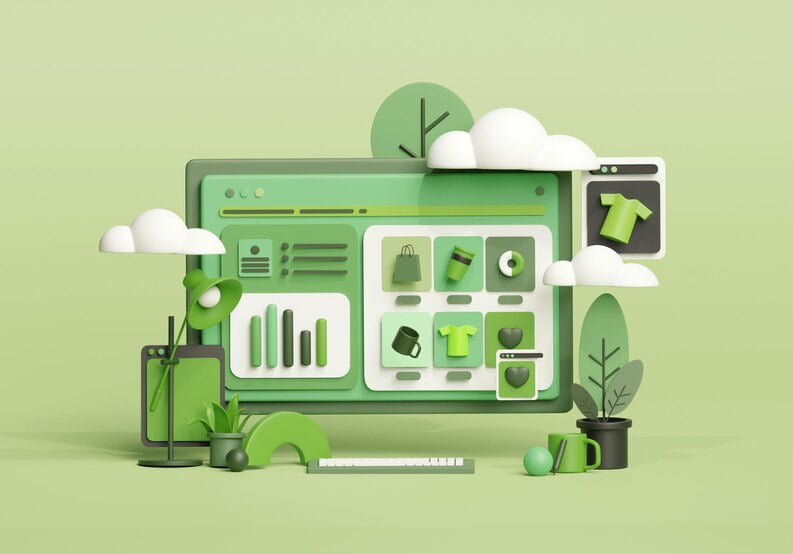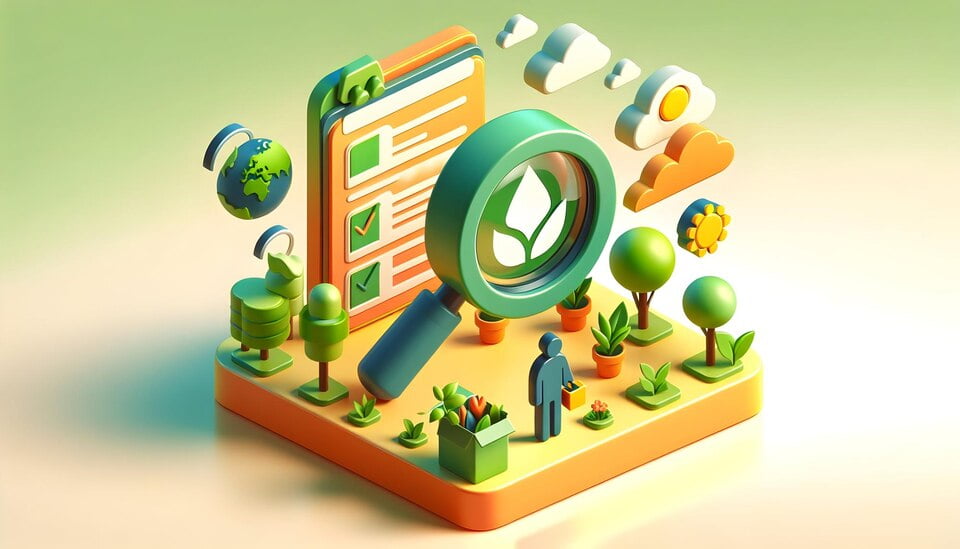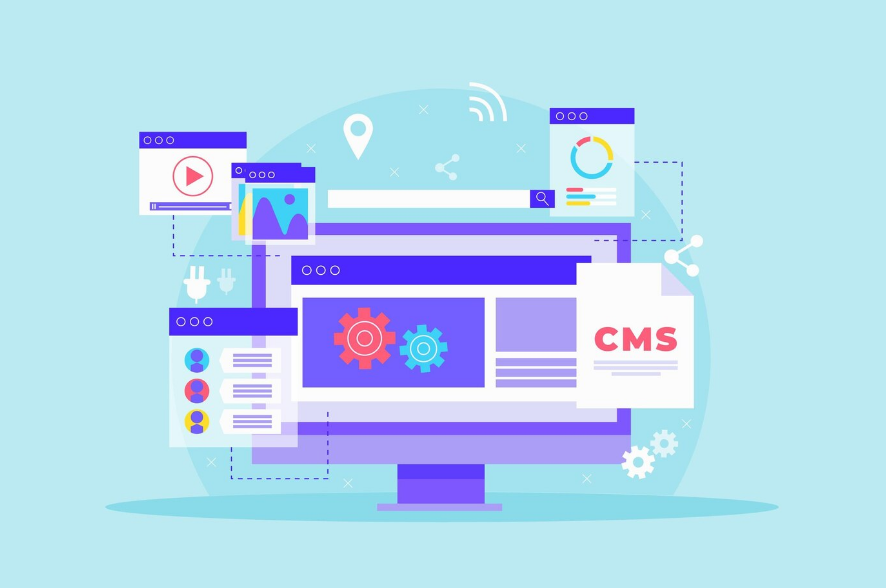If you’re serious about creating a lasting impact for your online business or content, you’ve probably heard of the term “evergreen content.” But what is evergreen content, exactly? In simple terms, evergreen content refers to content that remains relevant and valuable for an extended period, often indefinitely. Unlike time-sensitive content that covers topical subjects or current events, evergreen content is “evergreen” because it remains fresh and timeless, even years after its creation.
Understanding the definition of evergreen content is essential because it plays a crucial role in your online marketing strategy. By leveraging the characteristics of evergreen content, you can create content that attracts consistent traffic, increases your website’s authority, and delivers long-term results.
In this article, we’ll explore what evergreen content is, its key characteristics, and why it’s vital for your online presence. We’ll also provide practical tips on creating evergreen content that resonates with your target audience, maximizes its longevity, and enhances your search engine optimization (SEO) efforts.
So, let’s dive in and explore the world of evergreen content, starting with its definition and characteristics.

Table of Contents
What is Evergreen Content? Why Evergreen Content is Vital
If you want your online presence to thrive, evergreen content can make all the difference. Unlike trending content, evergreen content remains relevant long after its initial publication, driving consistent traffic and engagement to your site. Here are some of the key benefits of incorporating evergreen content into your content strategy:
- Continuous Traffic: With evergreen content, your site’s traffic won’t be solely reliant on new content. Instead, evergreen content can drive consistent traffic to your site over time, bringing in new visitors and repeat visitors alike.
- Better SEO: Evergreen content tends to be more evergreen content tends to be more search engine-friendly than other types of content. It can help boost your website’s search engine ranking, leading to increased visibility and organic traffic.
- Longevity: Unlike other types of content that may lose relevance quickly, evergreen content has staying power. Over time, it can become a reliable resource that users continue to revisit, cite, and share.
- Cost-Effective: Compared to constantly churning out new content, creating evergreen content can be a cost-effective way to maintain an online presence. Evergreen content requires less upkeep and can continue to generate traffic with minimal updates.
Overall, evergreen content is an essential component of a successful content strategy. By creating timeless and valuable content, you can drive traffic, improve your site’s SEO, and maximize the return on your content investment.

Crafting Evergreen Content for Lasting Impact
Creating evergreen content takes time and effort, but it can pay off in lasting impact and increased traffic. It’s important to have a clear strategy in place to guide your content creation process.
Define Your Audience
The first step in crafting evergreen content is to define your target audience. Who are they? What are their interests and pain points? What questions are they asking? By understanding your audience, you can create content that speaks directly to their needs and resonates with them over time.
Choose Timeless Topics
Evergreen content focuses on topics that are timeless and always relevant to your audience. These topics should not go out of fashion or become obsolete. Think about the core values of your brand, and create content that aligns with those values and is relevant to your audience in the long term.
Create Content in Different Formats
Creating evergreen content doesn’t mean you need to stick to one format. You can create blog posts, videos, podcasts, infographics, and more. Some formats may work better for your audience than others, so you should experiment with different formats and see what works best.
Be Visible Across Platforms with Repurpose Strategy
Once you have created evergreen content, you can repurpose it across different platforms to maximize its impact. For example, you can create social media posts that link back to your blog post or turn a blog post into a video or infographic. By repurposing content, you can reach a wider audience and get more mileage out of your evergreen content.
Measure and Analyze Data
An important part of crafting evergreen content is measuring its impact. You should track your website traffic, engagement, and other metrics to determine what’s working and what’s not. Use the data you collect to inform your future content strategy and make adjustments as needed.
In conclusion, creating evergreen content is a strategic process that requires careful planning and execution. By understanding your audience, choosing timeless topics, experimenting with different formats, repurposing content, and analyzing data, you can create evergreen content that has a lasting impact and drives consistent traffic to your website.

Examples of Evergreen Content Done Right
Evergreen content is an essential component of any successful content marketing strategy. To inspire you with content ideas and demonstrate the power of evergreen content, we’ve put together a list of real-life examples that have stood the test of time.
The Beginner’s Guide to SEO by Moz
Moz’s Beginner’s Guide to SEO is a classic example of evergreen content that has been a go-to resource for years. It covers all the basics of search engine optimization and is continuously updated to keep pace with changes in the industry. Its clarity and usefulness have made it a popular resource for marketers and business owners alike.
How To Win Friends And Influence People by Dale Carnegie
While not explicitly a piece of digital content, Dale Carnegie’s classic book, How To Win Friends And Influence People, is an excellent example of evergreen content. Published over 80 years ago, the book provides timeless advice on how to communicate more effectively and build better relationships with others. It has sold millions of copies worldwide and continues to resonate with readers to this day.
100 Ways to Cook an Egg by Food Network
The Food Network’s 100 Ways to Cook an Egg is a perfect example of how evergreen content can be both practical and entertaining. The article provides creative ways to cook eggs, from simple scrambled eggs to fancier dishes like eggs Benedict. By showcasing the incredible versatility of eggs, the article has remained a popular resource for cooking enthusiasts for years.
The Elements of Style by William Strunk Jr. and E.B. White
The Elements of Style is a timeless guide to writing well. First published in 1919 by William Strunk Jr., the book has been updated and revised over the years, most famously by author E.B. White. The guide covers all the essentials of writing, from grammar and punctuation to style and organization. Its comprehensive yet accessible approach has made it a perennial favorite among writers and editors.
The Big Short by Michael Lewis
The Big Short by Michael Lewis is a prime example of evergreen content in the form of non-fiction. The book tells the story of the 2008 financial crisis and is notable for its accessible and entertaining writing style. It provides readers with a clear understanding of complex financial concepts and has become a classic in its field.
These examples showcase the diversity of evergreen content and the critical role it can play in engaging and educating audiences over time. By crafting content that provides lasting value, you can ensure that your content continues to attract visitors long after its initial publication.
Evergreen Content vs Trending Content
Whether you’re a content marketer, blogger, or website owner, you’ve probably heard the terms ‘evergreen content’ and ‘trending content.” These two types of content have distinct characteristics and serve different purposes in your content strategy. Understanding the difference between them can help you make informed decisions about the type of content you should create and how you should prioritize it.
What is Evergreen Content?
As we explored in Section 1, evergreen content is content that doesn’t have an expiration date. This type of content remains relevant and useful to readers over a long period and doesn’t become outdated quickly. Evergreen content typically addresses topics that have timeless appeal and offer value to the reader regardless of when they access it. Examples of evergreen content include instructional how-to guides, product reviews, and FAQs.
What is Trending Content?
Trending content, on the other hand, is content that addresses a topic that is currently popular or relevant. Trending content generally has a shorter shelf life than evergreen content. It can be a powerful asset in content marketing since it provides an opportunity to capitalize on a hot trend and attract a large audience quickly. Examples of trending content include current news stories, viral videos, and social media memes.
| Evergreen Content | Trending Content |
|---|---|
| Remains relevant over a long period | Addresses a topic that’s currently popular |
| Typically offers educational or informational value | May offer entertainment or humor value |
| Less time-sensitive than trending content | More time-sensitive than evergreen content |
| Helps establish your brand as an authority on a specific topic | Provides an opportunity to capitalize on short-term attention and attract a large audience quickly |
Why Incorporate Evergreen Content into Your Content Marketing Strategy?
As mentioned in Section 2, evergreen content is vital to your content strategy. By creating evergreen content, you can establish your brand as a reliable source of information on specific topics. This type of content provides value to your readers long after it’s published and can drive consistent traffic to your site. When you focus on evergreen content, you build a lasting asset that can continue to benefit your brand for years to come.
In contrast, relying too heavily on trending content can be risky. With trending content, the opportunity to capitalize on a hot topic is short-lived, and the audience you attract may not be interested in your brand or other content offerings. If you want to build a sustainable content marketing strategy, evergreen content should comprise a significant portion of your content portfolio.
Maximizing Evergreen Content’s Longevity
Your evergreen content is essential for your online presence. It attracts sustained traffic and provides lasting value. However, to maximize the benefits of evergreen content, you need to ensure its longevity. In this section, we will provide you with valuable tips on how to keep your evergreen content up-to-date and engaging.
Update Your Evergreen Content Regularly
Your evergreen content should remain relevant and timely even after years of publishing. Therefore, you need to review it periodically and make necessary updates. You can update your content by:
- Adding new information or examples
- Removing outdated information
- Optimizing the content for new keywords
By keeping your evergreen content up-to-date, you ensure that it remains valuable to your audience and continues to attract traffic to your website.
Repurpose Your Evergreen Content
Your evergreen content can serve as a source of inspiration for new content ideas. You can repurpose your content by:
- Creating a video or podcast based on your written content
- Transforming a blog post into an infographic
- Creating new social media posts based on your evergreen content
When you repurpose your evergreen content, you give it a new lease of life and reach out to new audiences.
Share Your Evergreen Content on Multiple Channels
Your evergreen content can reach more people by sharing it on multiple digital channels. You can promote your evergreen content by:
- Sending newsletters to your subscribers
- Sharing on social media platforms
- Submitting your content to online directories
When you share your evergreen content on multiple channels, you increase its visibility and attract more traffic to your website.
In conclusion, to maximize the benefits of evergreen content, you need to update it and repurpose it. You should also share it on multiple digital channels. By doing so, you ensure that your evergreen content remains relevant and valuable for your audience.
The Power of Evergreen Content for SEO
Evergreen content is a vital element in any effective content strategy. Not only does it bring lasting value to your audience, but it can also have a significant impact on your search engine optimization (SEO) efforts.
By creating content that is relevant and valuable to your audience, you can increase the likelihood that users will spend more time on your website, reducing your bounce rate. Search engines take this as a sign of quality and relevance, boosting your website’s rankings in search results pages.
Furthermore, evergreen content is timeless and continually provides value to your audience, encouraging more people to share and link to your website. This, in turn, can increase your website’s referral traffic and improve its visibility in search engines.
By incorporating evergreen content into your overall content strategy, you can ensure that your website is constantly providing value to your audience while also reaping the benefits of increased traffic and higher rankings in search results pages.
Enhancing User Engagement with Evergreen Content
Evergreen content is a powerful tool that can not only drive traffic but also enhance user engagement on your website or blog. When you create content that remains relevant and valuable over time, your audience will keep coming back for more. Here are some insights on how to create evergreen content that resonates with your audience and encourages interaction and sharing:
Focus on Your Audience’s Needs
One of the benefits of evergreen content is that it addresses your audience’s needs and pain points. When you create content that solves a problem or provides valuable information, you establish trust and authority in your niche. By understanding your audience’s needs and interests, you can craft evergreen content that resonates and encourages engagement.
Keep Your Content Up-to-Date
Evergreen content should remain fresh and relevant to remain engaging. In today’s fast-paced digital age, information becomes outdated quickly, and your evergreen content may lose its luster if not updated. Regularly updating your evergreen content not only keeps it relevant, but it also signals to your audience that you are committed to delivering value.
Promote Your Evergreen Content
To enhance user engagement for your evergreen content, you must promote it across various digital channels. This can include social media posts, email newsletters, or incorporating it into other content formats such as videos, webinars, or podcasts. By leveraging multiple channels, you increase the chances of your evergreen content reaching new audiences and encouraging engagement.
By understanding the benefits of evergreen content and how to create it, you can elevate your content marketing strategy to the next level. Generate user engagement that will keep your website traffic flowing and establish a solid online presence that will last for years to come.
Leveraging Evergreen Content Across Multiple Channels
Once you’ve created evergreen content, it’s essential to leverage it on multiple digital channels to maximize its reach and impact. Here are some tips to help you achieve this:
1. Repurpose Your Content
Turn your evergreen content into new formats such as videos, podcasts, or infographics to reach different audiences across multiple channels. This approach ensures that you are offering valuable content in different formats, making it easier for your audience to consume and share it.
2. Promote on Social Media
Share your evergreen content on social media platforms, including LinkedIn, Facebook, Twitter, and Instagram. Promote it organically or boost it with targeted ads to drive traffic to your website. Use relevant hashtags and keywords to make it easy for your audience to discover your content.
3. Email Marketing
Send newsletters or email campaigns to subscribers, featuring your evergreen content. This approach ensures that your content reaches your subscribers even if they missed it when you published it. Use catchy headlines to grab their attention and add a clear call to action to encourage them to read and share it.
4. Guest Posting
Contribute guest posts to reputable publications in your industry that promote evergreen content. This approach helps you reach a wider audience and build relationships with other digital marketers or bloggers who might share your content on their channels.
By leveraging your evergreen content across various channels, you ensure that your content gets seen by a wider audience and continues to drive consistent traffic to your website over time.
Conclusion
In conclusion, creating evergreen content should be an integral part of your content marketing strategy. By crafting valuable and timeless content, you can attract a steady stream of traffic to your website or blog, enhance user engagement, and improve your search engine visibility.
To create evergreen content, you must understand what it is and its key characteristics. You should also formulate an effective content strategy that ensures your content stays relevant and engaging for years to come.
Finally, to maximize the impact of your evergreen content, repurpose and promote it across multiple digital channels. With these tips and strategies, you can unlock the secrets to generating consistent traffic and achieving long-term success online.




